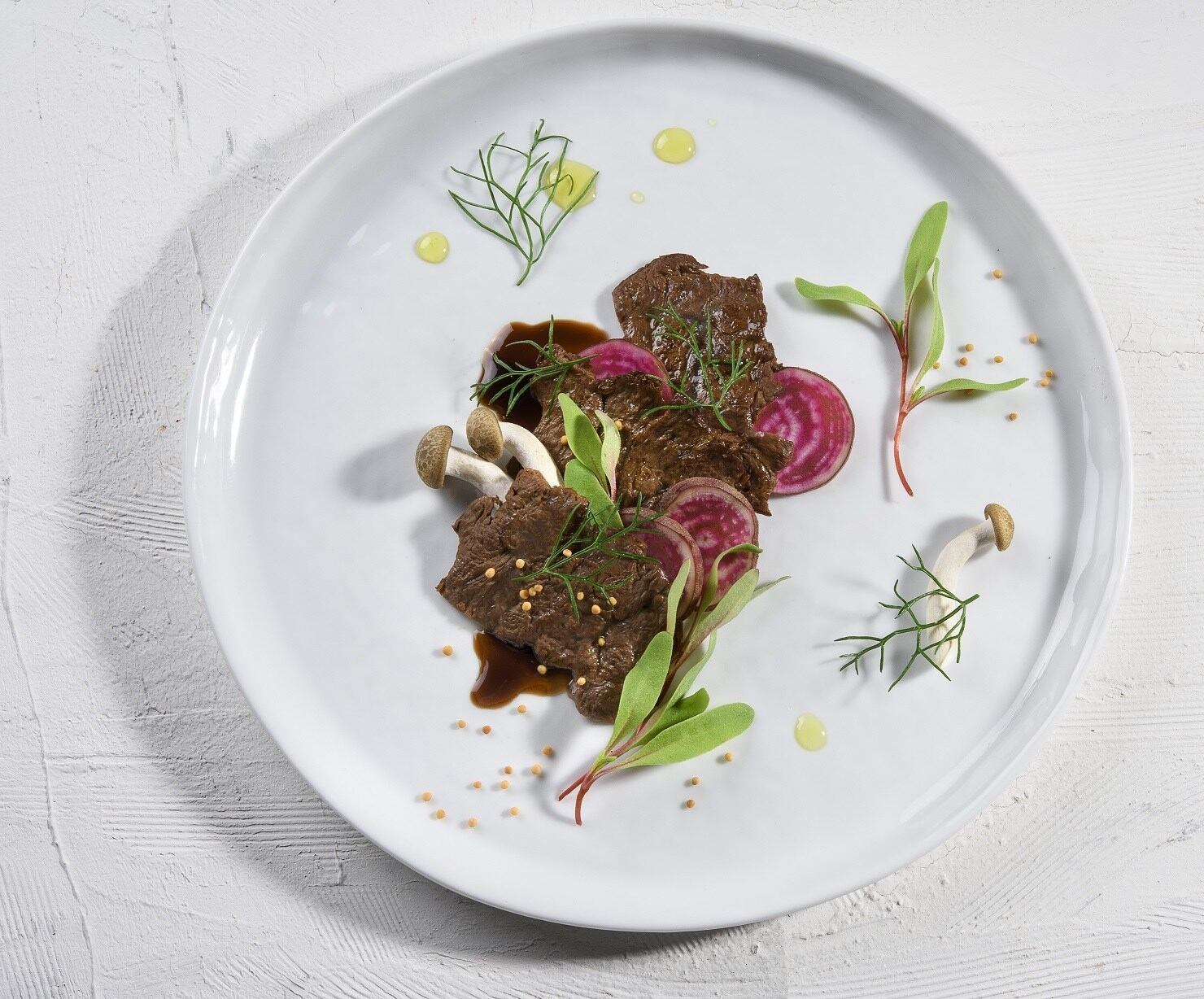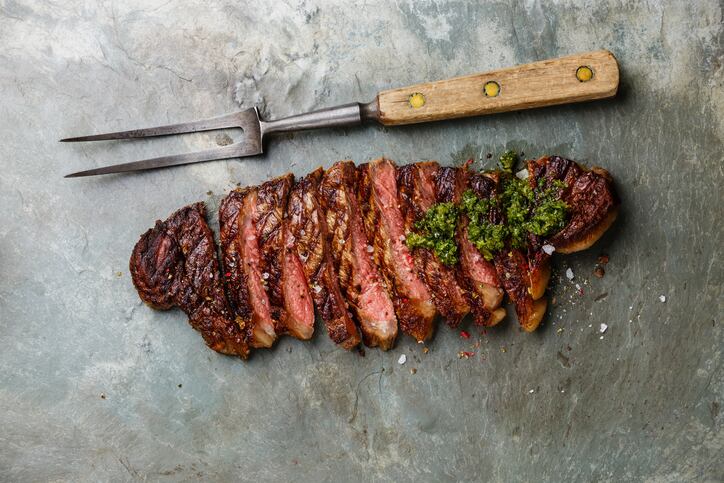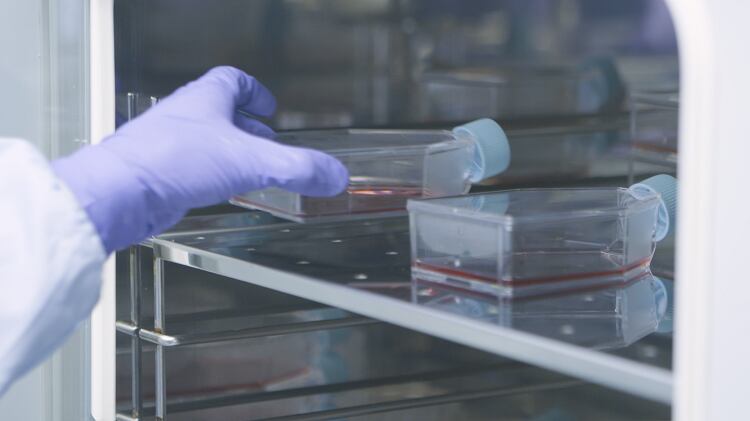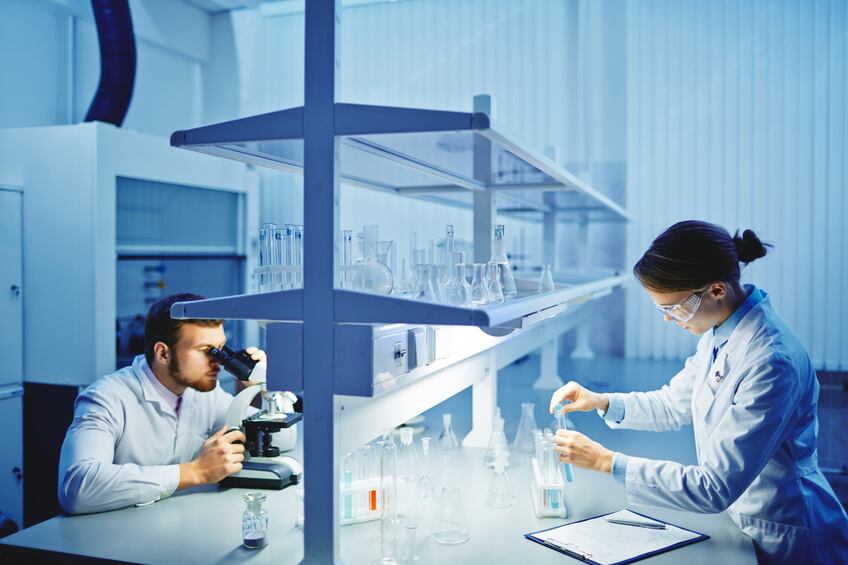By 2040, 60% of the meat we eat will either come in the form of ‘novel vegan meat replacements’ (plant-based meat analogues with the sensory properties of meat) or will be created through exponential cell growth in bioreactors (a process with many names, from lab, to cultured, to clean meat and even cellular agriculture) a recent report from AT Kearney predicted.
The authors describe plant-based meat analogues as ‘generation 0’ while cultured meat is referred to as ‘generation 1’. “The names emphasize their novelty and potential but also the different pace of product development and market penetration. According to most industry experts, novel vegan meat replacements are more relevant in the transition phase toward cultured meat, whereas the latter will be most relevant in the long term,” they suggested.
The consulting firm noted the ‘predicted triumph’ of cultured meat is based on the sustainability of the process and its ability to deliver ‘tailor-made nutrition’ through meat products.
AT Kearney forecast that cultured meat will, in the long run, act as a major disruptor to the conventional meat sector. Indeed, cultured meat companies have captured the imagination of high profile investors, including Bill Gates and Richard Branson, as well as conventional meat manufacturers, with the likes of Cargill, Tyson and PHW Group all putting money into start-ups in the space.
According to data from IDTechEx, investors have responded ‘optimistically’, with cultured meat start-ups raising over $125 million since 2015. Significantly for the sector’s outlook, investments grew by 85% between 2017 and 2018.
AT Kearney is not the first to predict the rapid rise in cultured or ‘slaughter-free’ meat. Back in 1931 Winston Churchill famously wrote that by the 1980s we will ‘escape the absurdity’ of growing a whole chicken ‘in order to eat only its breast or wing’ by growing the parts separately ‘under a suitable medium’.
While Churchill was certainly a few decades out, are we now on the cusp of a cultured meat revolution?
The big challenges: Price, scale and regulation
The science behind cultured meat is now reasonably well-established.

In 2013, Dr Mark Post of Maastricht University – and founder of Mosa Meat – produced the first burger grown from cultured animal cells.
The number of cultured meat companies has grown rapidly since, as international start-ups compete to be the first to bring a cultured meat to market. Alongside Mosa Meat, contenders include Memphis Meats, JUST Meat and Aleph Farms, among others.
The process sees a sample of cells taken from a live animal and put into a bioreactor. Inside the tank, the cells are fed a growth medium - a nutrient-rich soup that enables them to grow and divide.
In this way, trillions of cells can be produced from a small sample. Once enough cells are produced, they are turned into developed muscle and fat cells through a process called 'differentiation'. Standard food processing technologies are then used to form the final product – meat.
Nevertheless, cultured meat still has a long way to go before it appears on our dinner tables.
The first cultured burger famously cost $280,000 to produce. Costs have come down significantly since. But price is still a challenge.
The major production expense in cultured meat is the growth medium, which can cost around $400 per litre. To put this in context, a conventional bioreactor requires up to 600 litres to produce 1 kg of meat…
Dr Michael Dent of IDTechEx believes that while there are some ‘promising areas’ of production innovation, such as bioreactor technology, the ‘biggest win’ will be reducing the cost of the growth medium.
“By far the biggest cost components of growth medium are the growth factors, proteins that tell the cells to stay alive and continue dividing. These growth factors can constitute about 98% of the cost of growth medium. There’s no biological reason these growth factors can’t be produced far more cheaply, using recombinant production in engineered yeast, similar to how commercial scale rennet is produced for cheesemaking. The issue is nobody has developed large scale methods to do this. Once this happens, the price of growth medium could fall by orders of magnitude,” he told FoodNavigator.
Cultured meat companies are investing heavily in R&D to alleviate this cost – but it could well remain a sticking point for years to come.
Another major challenge for the nascent cultured meat industry is scale-up. At the moment, nobody has a scaled production or supply chain established - although many are working towards this goal.
Mosa Meat, for instance, is in the process of constructing a pilot plant with enough capacity to serve a select number of restaurants. After 2021, the group will turn its attention to building out its capacity further still. But they are not alone - JUST Meat has set a target to make a first commercial sale by the end of 2019 and Aleph Farms has said it will start building ‘large, clean bio-farm facilities in 2021, working towards a ‘limited launch' in 3-4 years.
Commercial scale is a prerequisite to delivering affordable slaughter-free meat. But while the processes used in cultured meat are well established at a lab bench scale, production at commercial scale is yet to be achieved. According to Dr Dent, this is partially because the technologies needed to grow cultured meat on a large scale, such as advanced bioreactors, ‘simply do not exist’.
Nevertheless, there are those in the industry that remain bullish about a timetable for cultured meat hitting the market.
Josh Tetrick, CEO of JUST, has claimed that the company’s cultured chicken nuggets have been ready for small scale commercialisation since 2018 (although the cost is reportedly still a whopping $50 per nugget). JUST has indicated they could be released as early as late 2019, pending regulatory approval.
And therein lies the rub.
Nowhere has yet approved cultured meat for consumption. And, with the rigorous safety assessments that are likely to be required, approval could take years.
Consumer acceptance: Another case of ‘Frankenfood’?
Perhaps this is why some in the sector are a little more coy about when we will see cultured meat on supermarket shelves. Nobody wants another PR disaster like the backlash that befell genetically modified foods. For this reason, leading players like Uma Valeti, CEO of Memphis Meats, have emphasised the importance of taking time to get the release right.

"The GMO industry has still not recovered from the public relations backlash, even after 20 years, and it’s important that the cultured meat industry learns from these mistakes," Dr Dent noted.
"The key messages should be around transparency, with cultured meat companies being as open as possible about their manufacturing process, and about emphasising the deliciousness of these products, with the environmental and ethical benefits being a secondary focus. Whilst people do care about the environmental impact and ethics of meat consumption, food safety and trust are bigger concerns – it doesn’t matter how sustainable your product is if consumers don’t feel safe eating it," he advised.
But while the experience of GMOs demonstrates consumers remain notoriously sceptical of biotechnology in food, there is some evidence to suggest that they are actually quite open to the prospect of eating lab meat.
Last year, consumer research found almost a third of UK and US consumers would be happy to eat cultured meat. The survey, carried out by specialist PR agency Ingredient Communications, detected a relatively even split between those who would – and wouldn’t – eat meat grown in bioreactors. In total, 29% said they would, 38% said they wouldn’t, and the remaining 33% said they didn’t know.
Richard Clarke, Ingredient Communications MD, said he was ‘surprised’ by how many people said they were willing to eat cultured meat.
“It’s such a new concept and when you consider the backlash against GMOs, and the unstoppable momentum of the naturalness trend, it seems counter-intuitive that people would be willing to eat meat produced in a laboratory. However, our survey shows that it has appeal for a significant proportion of consumers,” he noted.
The case for cultured meat: Sustainability and animal welfare
Clarke believes that a big pull for consumers is that lab meat is perceived as being both cruelty-free and environmentally friendly.
“It’s easy to see why so many consumers welcome the prospect of lab-grown meat. People enjoy eating meat, but often feel guilty about related issues such as animal welfare and the impact of farming on the environment. Cultured meat addresses those concerns, which is a compelling benefit.”
Certainly, the current system of animal agriculture places strain on natural resources. The Food and Agriculture Organization of the United Nations (FAO) estimates nearly half of the worldwide harvest is required to feed the livestock population. In contrast, agricultural production directly for human consumption accounts for just 37% of total production.
Land and water use are also issues. Nearly 60% of the world's agricultural land is used for beef production, yet beef accounts for less than 2% of the calories that are consumed internationally. Globally, agriculture accounts for 92% of the global freshwater footprint. Twenty nine percent of the water in agriculture is directly or indirectly used for animal production.
Meanwhile, animal agriculture is responsible for 14.5% of all greenhouse gas emissions, according to the FAO.
Cell culture has the potential to grow meat products nutritionally identical to those produced through animal slaughter, but far more efficiently and with a lower environmental footprint.
Mosa Meat claims a single cell sample can create up to 10,000 kg of cultured meat, with the cultured meat process requiring 99% less land and 96% less water than traditional livestock agriculture.

Israeli start-up Aleph Farms stresses that the process is also much faster than animal rearing. Cultured cells double in number every few days. Aleph claims that it can produce a batch of cultured steaks within three weeks, compared with the two years it takes to raise a cow.
Too good to be true?
But some question marks remain – the biggest of which is energy use.
“The energy issue is indeed a big question over the cultured meat industry, and several commentators have spoken about how the power costs of running a cultured meat facility could make the industry quite environmentally damaging in terms of greenhouse gases, possibly even more so than conventional agriculture,” IDTechEx’s Dr Dent conceded.
“An interesting point is that the major greenhouse gas from livestock agriculture is methane, which is much more damaging than carbon dioxide but only has an atmospheric lifetime of around 9 years. The carbon dioxide given off by a cultured meat facility will have an atmospheric lifetime of over 100 years, meaning even if cultured meat facilities are better in the short term, in the long run they could be more damaging.”
This means a whole-scale move to clean and renewable sources of energy could well be needed before cultured meat can be described as climate friendly.
However, because there are no commercial plants operating at scale, it is not yet possible to do a full life-cycle analysis. “Cultured meat companies are certainly claiming it will be better for the environment. Regardless of the greenhouse gases, cultured meat production will probably use far less water, antibiotics and farmland than conventional agriculture, so has clear environmental benefits in this regard,” Dr Dent concluded.



